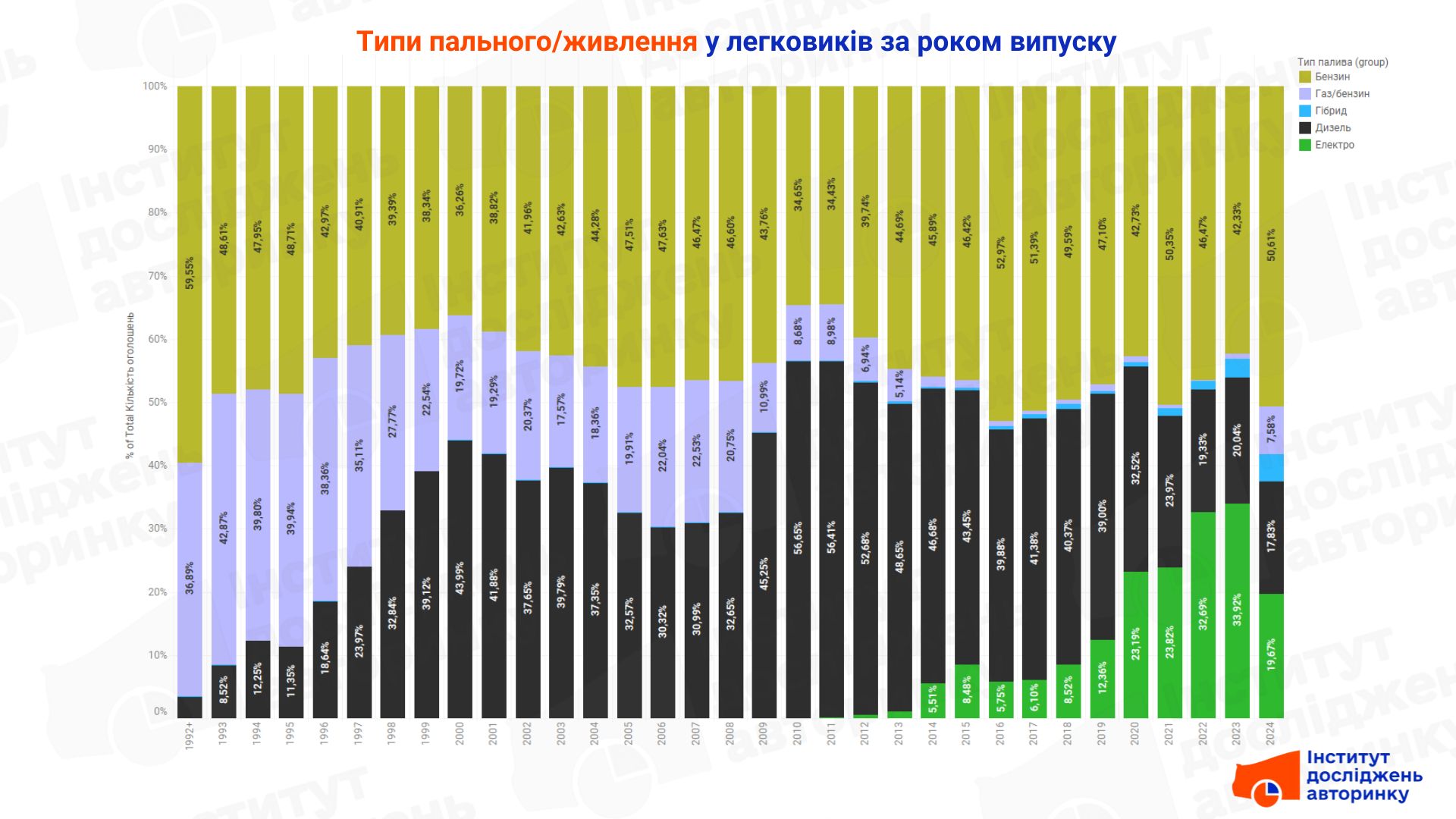
How the popularity of passenger cars has changed by fuel type over the past 30 years
Analysts at the Auto Market Research Institute continue to review how our market has changed over time. Previously, reviews of a similar structure were published on the type of drives and parts of gearboxes . This time we will consider the issue of fuel (or power plant power, if we are talking about electric cars).
So, on the basis of active offers for the sale of passenger cars posted on the leading Ukrainian online classifieds resources, we determine the share of fuel for each individual year of production. And we get a diagram that shows how over time (because manufacturers of new cars follow trends) the interest of buyers in one or another type of engine by type of fuel has changed.

Looking at the chart of visas of the upper field, we can see how stable the demand was for gasoline engines. And they still remain confident market leaders, having a "controlling stake" in the amount of 50.6%.
The next part is cars with gas cylinder equipment. It can be seen that over the years, the improvement of power supply and engine management systems has supplanted HBO, which is advisable to install on "atmospheric" engines of medium and large volumes, not "burdened" by direct injection of the GDI type, automatic valve timing and turbocharging.
Cars with hybrid power plants, or in one word — "hybrids", as they are mostly called in everyday life, despite their double advantages (electric car plus car with internal combustion engine) have not gained too much popularity — their share is barely noticeable among others. And although according to the "table" parameters, this is almost not an ideal solution, in practice we have to face the need to maintain (maintenance) also two cars — electric and gasoline (rarely — diesel). And manufacturers, due to the structural complexity of "hybrids", were in no hurry to put them on conveyors, which ultimately did not create a sufficient supply on the market.
- Order a turnkey car from Europe at West Auto Hub !
An interesting part of the diagram with diesel engines: you can see how they "broke" into the market in the 90s, how they were admired by motorists in the 2000s, and how their share gradually began to decrease after 2018. Most likely, diesel engines will not disappear from the market, despite the considerable efforts of eco-activists. After all, no matter how hard it is, currently no energy source has been invented for a passenger car or LCV weighing 70-100 kg (fuel weight), which would be enough for 1000 kilometers of travel. And when it comes to commercial vehicles, he should never stand near the chargers, fill up and go on the road. In such matters, economic expediency should prevail over the impulses of individual fighters against global warming.
And since we have touched on the topic of ecology, we will finish this review on it. The green sector is electric cars, which are confidently gaining more and more popularity. And it will continue to grow, along with the increase in choice on the market and the reduction of prices for popular passenger car models of the BEV group. At least, this will be the case for the entire next year, 2025, until "zero customs clearance" is in effect for this group of cars. And further, if the full package of taxes is returned (which is very likely, given the countryʼs high need for finance), the growth rate here may decrease somewhat.
So, now you know how the share of cars by type of fuel (or power) has changed over time, and in order not to miss the release of our new reviews, subscribe to the Telegram channel of the Institute of Car Market Research!


